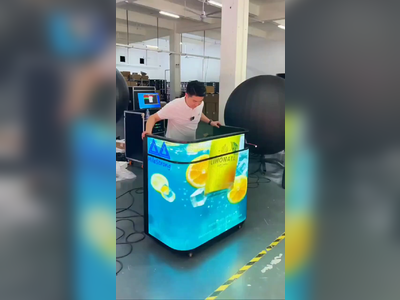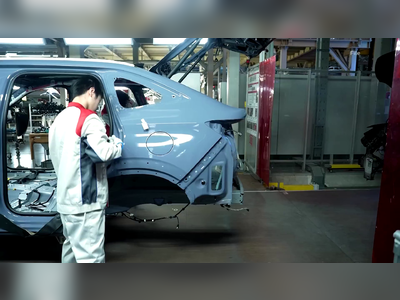Louvre Museum Closes Amid Staff Protests Over Working Conditions
Workers at the world's most visited museum protest for better working conditions, leading to the closure and long queues of tourists outside.
The Louvre Museum, the most visited museum in the world, was closed to visitors today due to protests by its staff, resulting in thousands of tourists standing in long lines outside.
Sara Sefiyan, a representative of the cultural workers' union, stated that the protest arose spontaneously, with workers demonstrating against deteriorating working conditions.
Staff gathered in the museum's auditorium in the morning to discuss concerns with management, primarily related to overcrowding and understaffing.
By noon, the museum remained closed, prompting some visitors to leave the lengthy queues formed at the entrance.
A message on the museum's official website indicated that the museum might open later due to the strike.
The protest broke out spontaneously during a routine internal meeting when gallery staff, ticket sellers, and security personnel refused to take their posts due to uncontrolled crowds and chronic staff shortages.
The Louvre rarely closes to the public, with previous closures occurring during World War II, the COVID-19 pandemic, and a brief staff strike in 2019. French President Emmanuel Macron had presented an extensive plan for the museum's renewal several months ago, which includes regulating significant temperature fluctuations within exhibition halls and addressing outdated pedestrian infrastructure at the entrance.
Macron's proposal for the Louvre renovation, termed "New Renaissance," aims to provide the museum's most famous artwork, Leonardo da Vinci's "Mona Lisa," with its own dedicated room, accessible via a timed entry ticket, while also proposing a new entrance to the museum from the Seine River.
Last year, the Louvre welcomed 8.7 million visitors, more than double the capacity that its infrastructure can effectively support.
Museum director Laurence de Car had warned in a leaked communication that parts of the building are no longer waterproof and that temperature variations threaten both exhibits and visitors, noting that facilities for toilets and food services are significantly below international standards.
Sara Sefiyan, a representative of the cultural workers' union, stated that the protest arose spontaneously, with workers demonstrating against deteriorating working conditions.
Staff gathered in the museum's auditorium in the morning to discuss concerns with management, primarily related to overcrowding and understaffing.
By noon, the museum remained closed, prompting some visitors to leave the lengthy queues formed at the entrance.
A message on the museum's official website indicated that the museum might open later due to the strike.
The protest broke out spontaneously during a routine internal meeting when gallery staff, ticket sellers, and security personnel refused to take their posts due to uncontrolled crowds and chronic staff shortages.
The Louvre rarely closes to the public, with previous closures occurring during World War II, the COVID-19 pandemic, and a brief staff strike in 2019. French President Emmanuel Macron had presented an extensive plan for the museum's renewal several months ago, which includes regulating significant temperature fluctuations within exhibition halls and addressing outdated pedestrian infrastructure at the entrance.
Macron's proposal for the Louvre renovation, termed "New Renaissance," aims to provide the museum's most famous artwork, Leonardo da Vinci's "Mona Lisa," with its own dedicated room, accessible via a timed entry ticket, while also proposing a new entrance to the museum from the Seine River.
Last year, the Louvre welcomed 8.7 million visitors, more than double the capacity that its infrastructure can effectively support.
Museum director Laurence de Car had warned in a leaked communication that parts of the building are no longer waterproof and that temperature variations threaten both exhibits and visitors, noting that facilities for toilets and food services are significantly below international standards.
AI Disclaimer: An advanced artificial intelligence (AI) system generated the content of this page on its own. This innovative technology conducts extensive research from a variety of reliable sources, performs rigorous fact-checking and verification, cleans up and balances biased or manipulated content, and presents a minimal factual summary that is just enough yet essential for you to function as an informed and educated citizen. Please keep in mind, however, that this system is an evolving technology, and as a result, the article may contain accidental inaccuracies or errors. We urge you to help us improve our site by reporting any inaccuracies you find using the "Contact Us" link at the bottom of this page. Your helpful feedback helps us improve our system and deliver more precise content. When you find an article of interest here, please look for the full and extensive coverage of this topic in traditional news sources, as they are written by professional journalists that we try to support, not replace. We appreciate your understanding and assistance.










